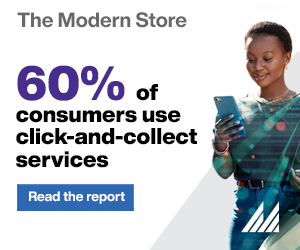The Black Friday transparency conundrum
The traditional November retail crescendo has become a month-long marathon, but behind the excitement of flashing banners and countdown clocks lies a strategic conundrum: are retailers conditioning shoppers to never pay full price again? James Bates, senior retail analyst at Context, takes a look
The Price of Perpetual Promotion
Black Friday has long been the headline act of the retail calendar, a time when consumers feel they can finally make major purchases without buyer’s remorse. But this year’s race to start early risks eroding that sense of occasion. If every week is a discount week, the very concept of “value” begins to blur.
Latest consumer research suggests that while technology products remain the most sought-after category, a deeper behavioural issue has emerged: trust. Increasingly, consumers believe that many “deals” are not genuine. The biggest deterrent to spending this Black Friday is not inflation or caution: it’s perceived deal transparency.
While participation in mega-sale events like Black Friday remains strong, 35% of UK consumers say they’re less interested in such events than they were a few years ago, with many citing doubts over whether the discounts are truly meaningful. In other words, consumer appetite hasn’t disappeared, but confidence is wavering.
And they may have a point. A quick comparison between this year’s headline PC promotion and a “Back to School” offer from September reveals a striking similarity: same model, same price, just different branding. To the average shopper, this undermines the narrative of a unique, once-a-year bargain.
When the Deal Doesn’t Feel Real
“In an environment where shoppers are struggling to understand what really represents a good deal, these anomalies can amplify concerns around promotions and the entire Black Friday experience,” I noted when reviewing recent data. “While a laptop discounted by several hundred pounds might appear to be a stellar deal, younger, digitally fluent consumers are doing their homework. They can tell when the ‘original price’ doesn’t quite add up.”
The irony is that many of these deals are good value: strong spec, desirable features, competitive pricing. But if consumers feel misled, perception eclipses reality. Trust, once lost, is difficult to rebuild.
Beyond consumer psychology lies another issue: operational confusion. In-store staff often appear as uncertain as the customers. When asked how long a rebate code would last or whether better deals were coming, one salesperson admitted, “This is a great laptop and the price is amazing! But I can’t tell you if it’ll be cheaper next week. There’ll definitely be more deals coming, though.”
This kind of uncertainty exposes a weakness in retail execution. Promotions that move faster than internal communication leave staff ill-equipped to reinforce the value proposition. If the people selling the product can’t explain the deal with confidence, how can consumers believe it?
A Market at a Crossroads
The bigger question is whether the Black Friday model itself is reaching a saturation point. Each year, promotions launch earlier, run longer, and promise more. Yet if consumers begin to associate the event with confusion or manipulation, the industry risks creating fatigue and cynicism instead of excitement.
For retailers, the challenge is not just to compete, it’s to restore clarity. Transparency around pricing history, clear communication to staff, and authenticity in promotional claims will be key to rebuilding trust.
In short, the question retailers must ask themselves this Black Friday is simple: are they selling more products, or selling out their credibility?





